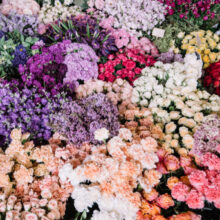 Floriography: The Language of Flowers and Their Hidden Meanings
Floriography: The Language of Flowers and Their Hidden Meanings
Flowers have an ineffable beauty that has been appreciated for thousands of years. Aside from their aesthetic appeal, they convey meaning and emotion through their language, known as floriography. The language of flowers is defined by their appearance, smell, and the cultural and historical events they are associated with. Whether deliberately or unconsciously, we use flowers as symbols of love, solace, gratification, and more. In this blog post, we will explore the history of floriography and popular meanings attributed to various flowers.
Historical Context
Floriography can be traced back to classical times when Greek and Roman mythology attached meanings to certain flowers, including the poppy, iris, and daisy. However, it is the Victorians who made the language of flowers the popular and elaborate form of communication we know today. During the Victorian era, people were very reserved in their thinking and public displays of emotion were seen as inappropriate. This led to the advent of the ‘secret language of flowers’ that allowed people to communicate their innermost thoughts without breaking social expectations.
Notably, flower symbolism has also been part of religious traditions. For instance, in Christianity, lilies signify purity and renewal, with the white rose representing the Virgin Mary’s innocence. Meanwhile, the lotus flower is a symbol of enlightenment in Buddhism and is often depicted as the seat for divine figures.
Popular Flowers and Their Meanings
1. Roses
Roses are the most popular type of flower in the world, with over 150 species. They have been cultivated for thousands of years, featuring in artwork, poetry, and literature. The rose is usually associated with love, from romantic love to friendship and familial love. Alternatively, roses can convey other emotions or meanings depending on their color. For example, a red rose represents passion and desire, while a pink rose is a symbol of gratitude, admiration, and grace. Yellow roses signify friendship, and white roses are associated with purity, reverence, and new beginnings.
2. Daffodils
Daffodils are associated with the beginning of spring and symbolize rebirth and renewal. They grow as a cluster and have bright yellow blossoms with long and slender leaves. Consequently, they represent friendship and hope, with their bright yellow color signifying the hope of a new dawn. Daffodils are also symbolic of joyful memories and bring happiness to the person receiving them.
3. Orchids
Orchids come in various colors and patterns. They can be single or double petal plants, with exotic scents as their distinctive feature. Orchids are associated with love, beauty, luxury and strength. They have long been a symbol of royalty and femininity, often presented as a gift to queens and other dignitaries. An orchid indicates pure love that one feels for one another, as well as inner strength and beauty.
4. Lady’s Mantle
Lady’s mantle is a yellow-green, frilly-leaved plant with clusters of small greenish flowers. It is associated with magical, mystical, and medicinal properties. Lady’s mantle represents nurturing, protection, and mothering. It is believed to offer the wearer protection against evil spirits and bad luck. In modern times, it is still associated with motherly aspects such as nurturing and protection.
5. Sunflowers
The sunflower is one of the most powerful symbols of hope and optimism. They are the perfect accompaniment for a message of encouragement and positivity and can be sent as a symbol of friendship and loyalty. Sunflowers represent adoration, loyalty, and longevity. They are symbolic of another person who has seen you through thick and thin.
6. Peonies
Peonies are highly prized for their beauty and scent. They blossom in a range of colors – pink, peach, red, and white. Peonies are symbolic of romance, prosperity, and good fortune. They are also associated with healing magic, indulgence, and elegance. Peonies indicate deep love, sensitive feelings, and devotion.
Final Thoughts
Flowers are more than just beautiful plants. They are symbols of deep-seated emotions and the beauty of the natural world. It is therefore not surprising that people have long used them as a means of communication. Floriography is the art of using flowers to convey emotions and messages, and it continues to be relevant today. Whether used in religious ceremonies, special events, or just as a simple gift, flowers carry meaning and can evoke powerful emotions in those who receive them. Understanding their meaning and the cultural and historical contexts behind them enrich the gift of flowers, imbuing them with deeper significance for both the giver and the recipient.
